Aubrey Plaza Calls Out ‘Disgusting Remark’ About Puerto Rico From Trump Rally: My Abuelita Would Say, ‘Tony Hinchcliffe, Go F— Yourself’


Dozens of people in Wisconsin have been sickened and at least five needed emergency medical services after inadvertently eating pizza tainted with Delta-9-tetrahydrocannabinol (THC), the principal psychoactive compound in cannabis, officials of Public Health Madison & Dane County reported late Friday.
The contamination, which health officials called "unintentional," occurred at Famous Yeti’s Pizza in Stoughton between October 22 and October 24. In a news release, the local health department advised customers to throw away any pizza they had from the restaurant during that time period.
"We want to be sure anyone who has this pizza on hand throws it away so they don't get sick," Bonnie Armstrong, director of Environmental Health at Public Health Madison & Dane County, said in the release. "If you ate the pizza and are experiencing THC-related symptoms, please contact your health care provider or call 911 if your symptoms worsen."


© Getty | Eric Savage
As H5N1 bird flu continues to spread wildly among California dairy herds and farmworkers, federal health officials on Thursday offered some relatively good news about Missouri: The wily avian influenza virus does not appear to have spread from the state's sole human case, which otherwise remains a mystery.
On September 6, the Missouri Health department announced that a person with underlying health conditions tested positive for bird flu, and later testing indicated that it was an H5N1 strain related to the one currently circulating among US dairy cows. But, state and federal health officials were—and still are—stumped as to how that person became infected. The person had no known contact with infected animals and no contact with any obviously suspect animal products. No dairy herds in Missouri have tested positive, and no poultry farms had reported recent outbreaks, either. To date, all other human cases of H5N1 have been among farmworkers who had contact with H5N1-infected animals.
But aside from the puzzle, attention turned to the possibility that the unexplained Missouri case had passed on the infection to those around them. A household contact had symptoms at the same time as the person—aka the index case—and at least six health care workers developed illnesses after interacting with the person. One of the six had tested negative for bird flu around the time of their illness, but questions remained about the other five.
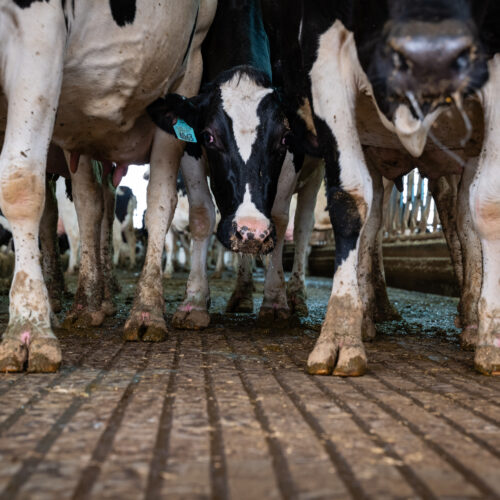

© Getty | Matthew Ludak
Two California dairy farm workers who had contact with H5N1-infected cows have contracted an H5 avian influenza virus, the Centers for Disease Control and Prevention confirmed Thursday evening.
In a news release from earlier today, California's health department announced only one presumptive positive case awaiting confirmation from the CDC. In that case, the person's illness was reported to be mild, with the only symptom being conjunctivitis (eye redness). This echoes the experience of other H5N1 human cases in this outbreak. The person is said to be staying at home and taking an antiviral flu medication.
In its media statement Thursday evening, the CDC reported confirming two cases. "At this time, there is no known link or contact between the first and second confirmed cases in California, suggesting these are separate instances of animal-to-human spread of the virus," the CDC said.
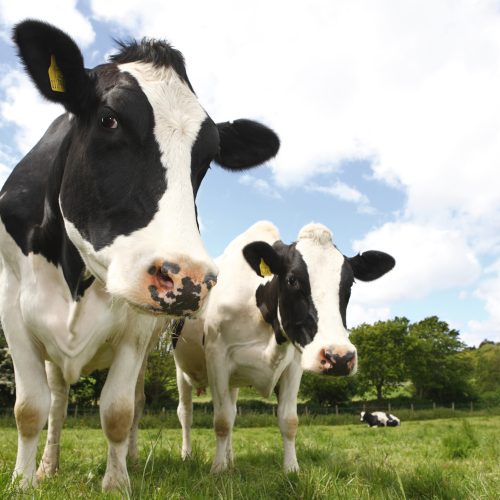
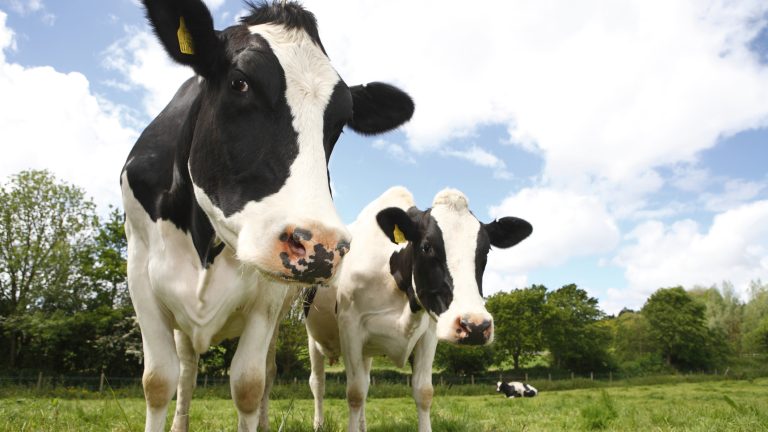
© Getty | Peter Cade
Two California dairy farm workers who had contact with H5N1-infected cows have contracted an H5 avian influenza virus, the Centers for Disease Control and Prevention confirmed Thursday evening.
In a news release from earlier today, California's health department announced only one presumptive positive case awaiting confirmation from the CDC. In that case, the person's illness was reported to be mild, with the only symptom being conjunctivitis (eye redness). This echoes the experience of other H5N1 human cases in this outbreak. The person is said to be staying at home and taking an antiviral flu medication.
In its media statement Thursday evening, the CDC reported confirming two cases. "At this time, there is no known link or contact between the first and second confirmed cases in California, suggesting these are separate instances of animal-to-human spread of the virus," the CDC said.


© [CDATA[Getty | Peter Cade]]
More than a month after a person in Missouri mysteriously fell ill with H5-type bird flu, investigators in the state are still identifying people who became ill after contact with the patient, raising questions about the diligence of the ongoing health investigation.
On September 6, Missouri's health department reported the state's first human case of H5-type bird flu, one that appears closely related to the H5N1 bird flu currently causing a nationwide outbreak among dairy cows. But the infected person had no known contact with infected animals—unlike all of the other 13 human cases identified amid the dairy outbreak this year. Those previous cases have all occurred in dairy- or poultry-farm workers. In fact, Missouri has not reported bird flu in its dairy herds nor recent poultry outbreaks.
Given the unexplained source of infection, health investigators in the state have been working to track the virus both backward in time—to try to identify the source—and forward—to identify any potential onward spread. The bird flu patient was initially hospitalized on August 22 but recovered and had been released by the time the state publicly reported the case.
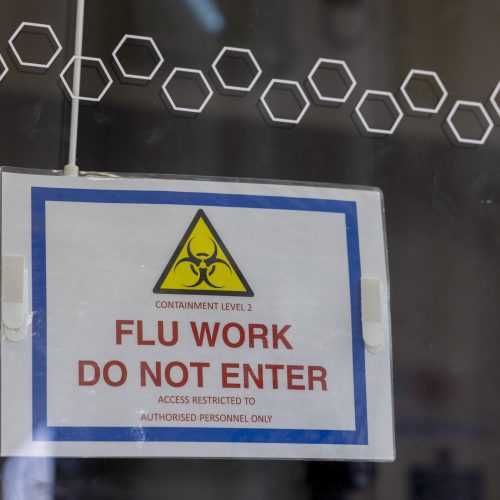
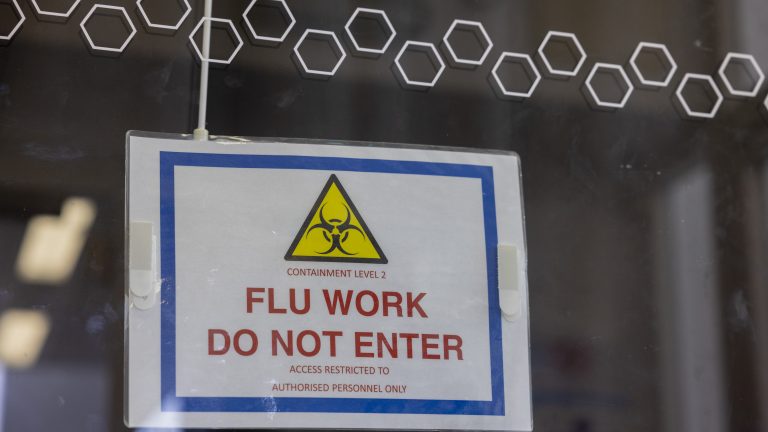
© [CDATA[Getty | Jason Alden]]
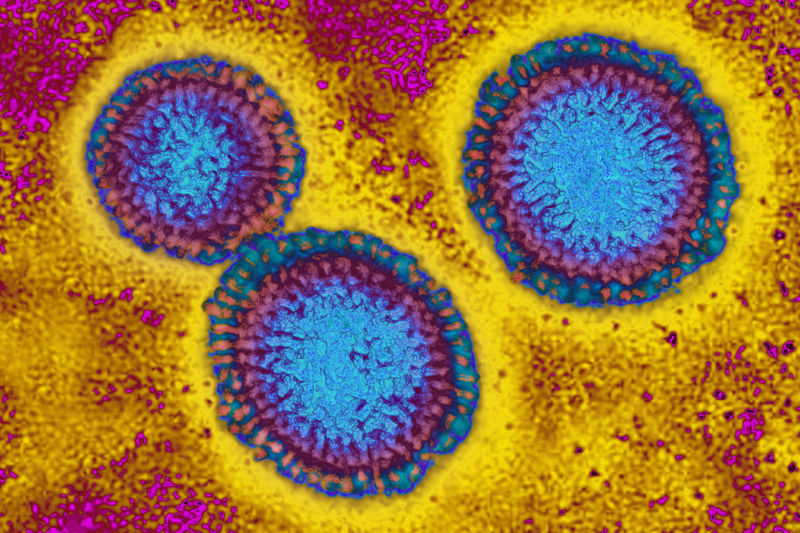
Enlarge / The influenza virus from an image produced with transmission electron microscopy. Viral diameter ranges from around 80 to 120 nm. (credit: Getty | BSIP)
A person in Missouri with no reported exposure to animals was confirmed to have been infected with H5-type bird flu, the Missouri Department of Health and Senior Services (MDHSS) announced late Friday.
MDHSS reported that the person, who has underlying medical conditions, was hospitalized on August 22 and tested positive for an influenza A virus. Further testing at the state's public health laboratory indicated that the influenza A virus was an H5-type bird flu. The Centers for Disease Control and Prevention has now confirmed that finding and is carrying out further testing to determine if it is the H5N1 strain currently causing a widespread outbreak among US dairy cows.
It remains unclear if the person's bird flu infection was the cause of the hospitalization or if the infection was discovered incidentally. The person has since recovered and was discharged from the hospital. In its announcement, MDHSS said no other information about the patient will be released to protect the person's privacy.
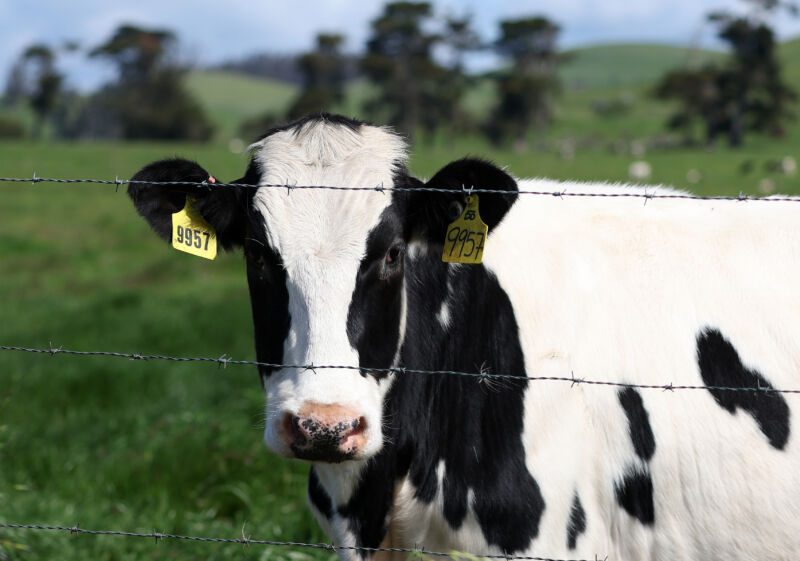
Enlarge / A cow grazes in a field at a dairy farm on April 26, 2024, in Petaluma, California. (credit: Getty | Justin Sullivan)
The outbreak of H5N1 bird flu in US dairy cows has now spread to three herds in California, the largest milk-producing state in the country, with around 1.7 million dairy cows, federal and state health officials have confirmed.
Fourteen states and 197 herds have now been affected by the unprecedented outbreak in dairy cows, which was first confirmed by federal health officials on March 25.
In a statement, the secretary of the California Department of Food and Agriculture, Karen Ross, said the spread of the virus to California was not unexpected. "We have been preparing for this possibility since earlier this year when [Highly pathogenic avian influenza or HPAI] detections were confirmed at dairy farms in other states," Ross said. "Our extensive experience with HPAI in poultry has given us ample preparation and expertise to address this incident, with workers’ health and public health as our top priorities."
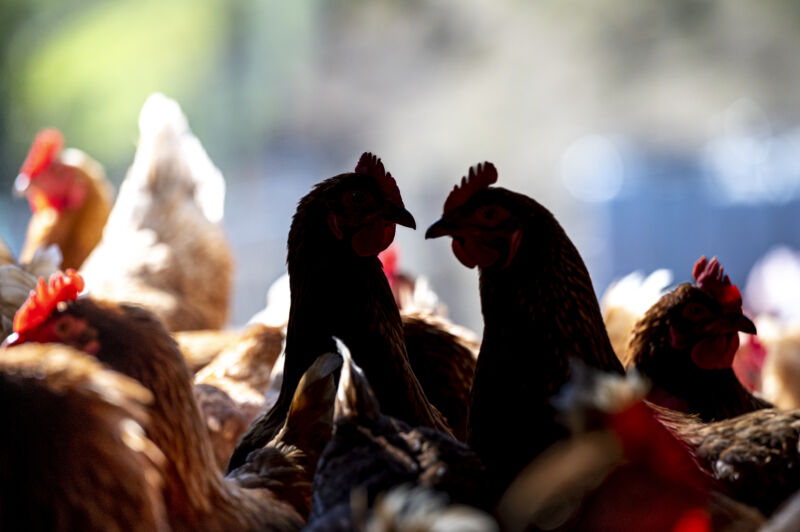
Enlarge (credit: Getty | David Paul Morris)
A second Colorado poultry farm has reported a case of bird flu in a worker, marking the state's seventh human case this month amid the ongoing outbreak among dairy cows.
Colorado health officials said the seventh case is, for now, a presumptive positive. That means that the person has tested positive at the state level while confirmatory testing is being carried out at the Centers for Disease Control and Prevention.
The presumptive positive worker was at a poultry facility in the state's northeastern Weld County. In recent weeks, six workers at another poultry farm in Weld also tested positive for bird flu. In that facility, a commercial egg layer operation with about 1.8 million birds, workers were infected as they culled chickens known to be infected with the highly pathogenic avian influenza. Genetic testing of the virus in the birds and the workers indicated that they were infected with a strain of H5N1 closely related to the virus found spreading in dairy cattle and to dairy farm workers.
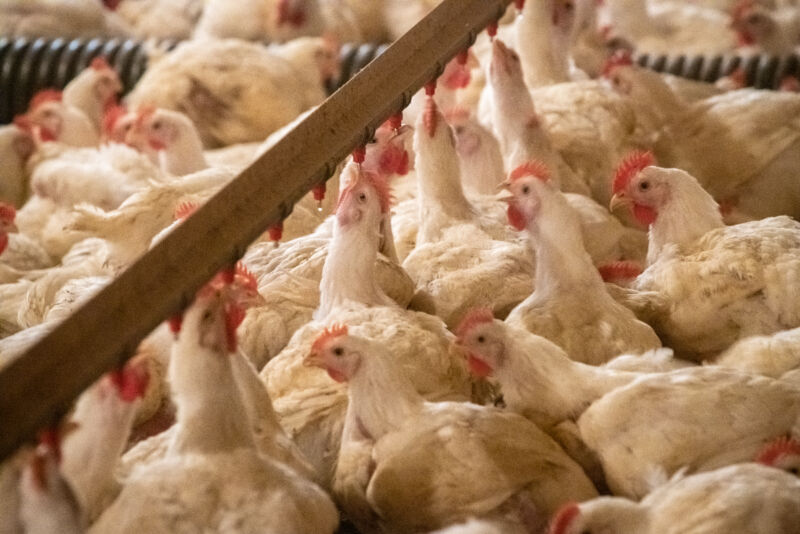
Enlarge (credit: Getty | Edwin Remsberg)
The highly pathogenic avian influenza H5N1 virus that spilled from wild birds into US dairy cows late last year may have recently seeped from a dairy farm in Colorado to a nearby poultry farm, where it then infected five workers tasked with culling the infected chickens
In a press briefing Tuesday, federal officials reported that four of the avian influenza cases have been confirmed by the Centers for Disease Control and Prevention, while the fifth remains a presumptive positive awaiting CDC confirmation.
All five people have shown mild illnesses, though they experienced variable symptoms. Some of the cases involved conjunctivitis, as was seen in other human cases linked to the H5N1 outbreak in dairy cows. Others in the cluster of five had respiratory and typical flu-like symptoms, including fever, chills, sore throat, runny nose, and cough. None of the five cases required hospitalization.

Enlarge (credit: Getty | Justin Sullivan)
The US government will pay Moderna $176 million to develop an mRNA vaccine against a pandemic influenza—an award given as the highly pathogenic bird flu virus H5N1 continues to spread widely among US dairy cattle.
The funding flows through BARDA, the Biomedical Advanced Research and Development Authority, as part of a new Rapid Response Partnership Vehicle (RRPV) Consortium. The program is intended to set up partnerships with industry to help the country better prepare for pandemic threats and develop medical countermeasures, the Department of Health and Human Services said in a press announcement Tuesday.
In its own announcement on Tuesday, Moderna noted that it began a Phase 1/2 trial of a pandemic influenza virus vaccine last year, which included versions targeting H5 and H7 varieties of bird flu viruses. The company said it expects to release the results of that trial this year and that those results will direct the design of a Phase 3 trial, anticipated to begin in 2025.
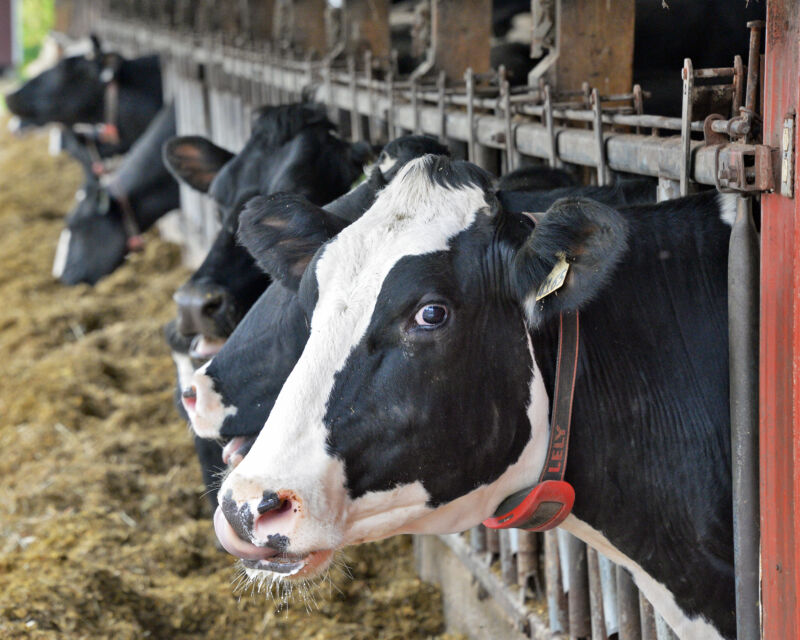
Enlarge / Holstein cows at a dairy farm. (credit: Getty | John Carl D'Annibale)
Another dairy farm worker in Michigan has been infected with avian influenza virus, state and federal health officials reported Thursday.
The case marks the third time the outbreak of bird flu in milking cows is known to have spilled over to a human. The dairy farm worker in Michigan, like the others, had close contact with H5N1-infected dairy cows, suggesting another case of cow-to-human transmission.
But the case reported today is notable for being the first one involving respiratory symptoms. In the first two cases, the dairy workers (one in Texas, the other in Michigan) reported only eye infections (conjunctivitis). This third case—also in Michigan but from a different farm—reported upper respiratory symptoms, including cough, congestion, and sore throat, as well as eye discomfort and watery discharge, but not conjunctivitis. The worker was given an antiviral (Tamiflu) and is said to be recovering. No other workers on the farm have shown symptoms, and the worker's household contacts are being monitored.
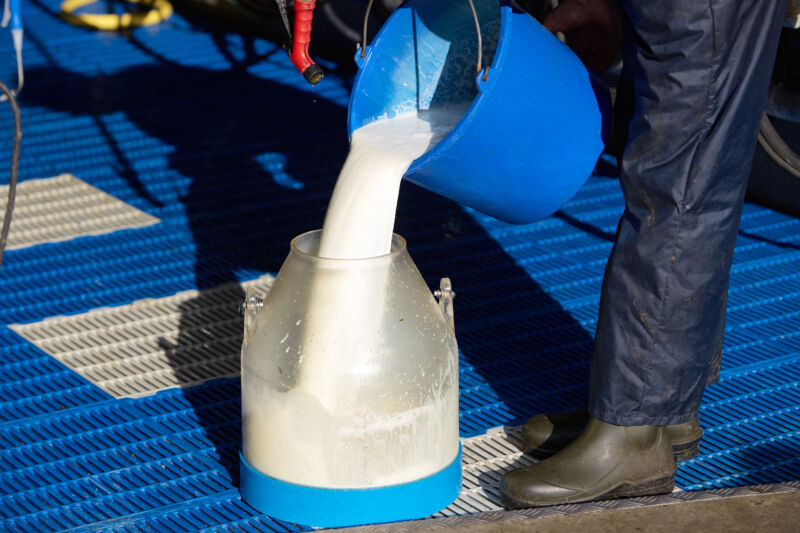
Enlarge / Fresh raw milk being poured into a container on a dairy farm on July 29, 2023, in De Lutte, Netherlands. (credit: Getty | Pierre Crom)
Despite the delusions of the raw milk crowd, drinking unpasteurized milk brimming with infectious avian H5N1 influenza virus is a very bad idea, according to freshly squeezed data published Friday in the New England Journal of Medicine.
Researchers at the University of Wisconsin-Madison squirted raw H5N1-containing milk from infected cows into the throats of anesthetized laboratory mice, finding that the virus caused systemic infections after the mice were observed swallowing the dose. The illnesses began quickly, with symptoms of lethargy and ruffled fur starting on day 1. On day 4, the animals were euthanized to prevent extended suffering. Subsequent analysis found that the mice had high levels of H5N1 bird flu virus in their respiratory tracts, as well their hearts, kidneys, spleens, livers, mammary glands, and brains.
"Collectively, our data indicate that HPAI [Highly Pathogenic Avian Influenza] A(H5N1) virus in untreated milk can infect susceptible animals that consume it," the researchers concluded. The researchers also found that raw milk containing H5N1 can remain infectious for weeks when stored at refrigerator temperatures.
Reissued with obsolete COVID-19 page links removed.
Exercise normal precautions in Zambia.
Read the country information page for additional information about travel to Zambia.
If you decide to travel to Zambia: